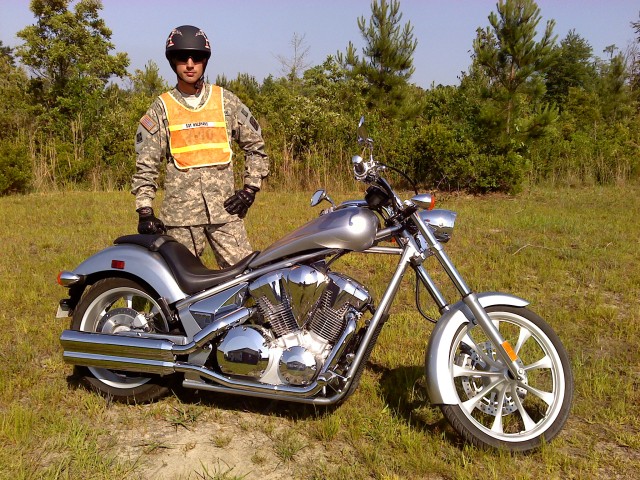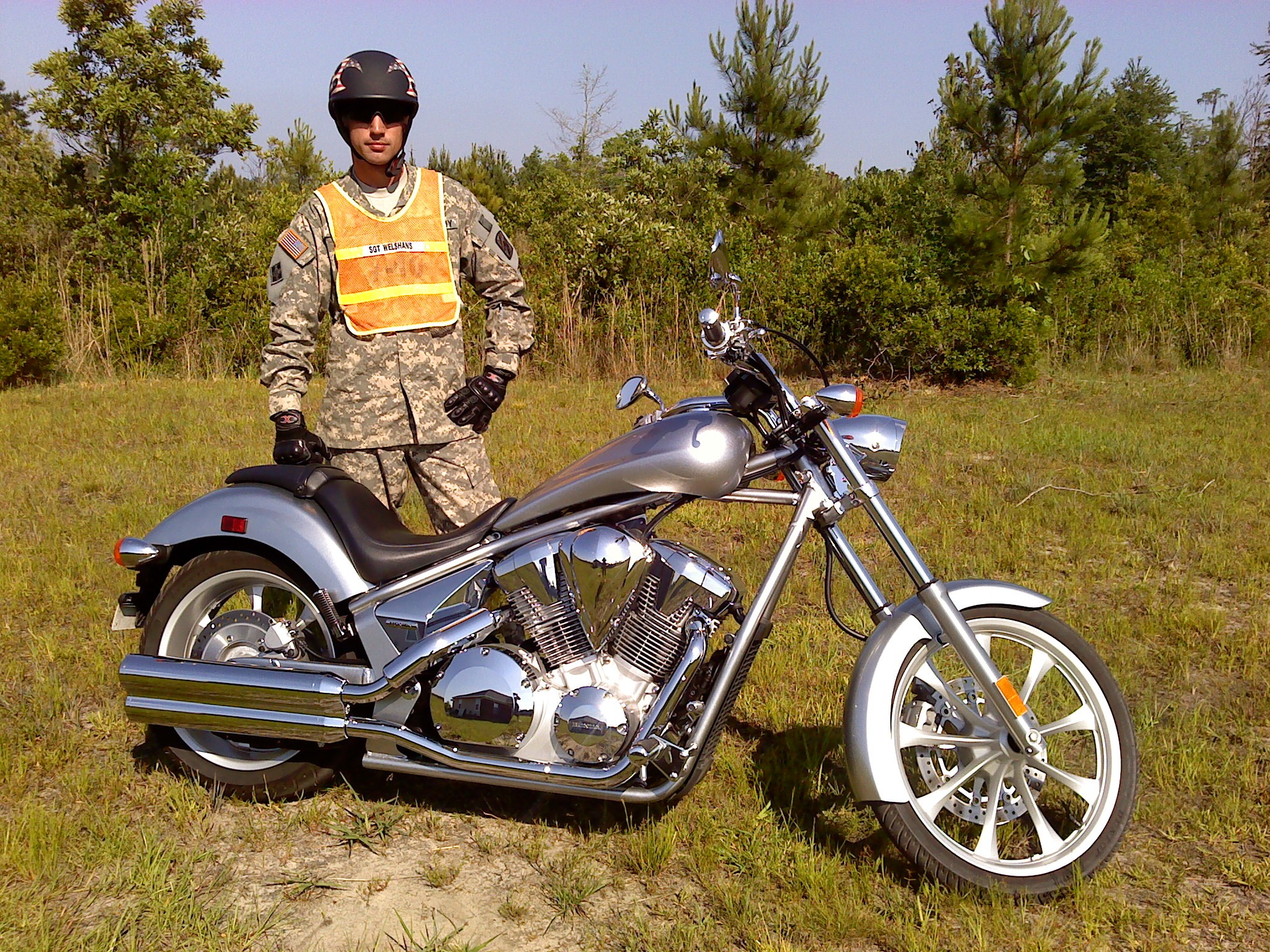WASHINGTON, D.C. - On the way to pick up his brand new Honda Fury motorcycle from the dealership, Sgt. Richard Welshan beamed with excitement.
This was his first street bike, and tips he had learned during recent motorcycle training at Fort Stewart, Ga., ran through his head.
Riding motorcycles wasn't something new to the Soldier; he had ridden dirt bikes growing up. And he had the good sense to realize there was a distinct difference between the two types of motorcycles when it comes to handling. More importantly, he had the good sense to enroll in an installation riding safety course.
"All I can say is 'thank you, thank you, thank you' to my instructors, Bobbi and Merland, for the training I received ... and for all the great things everyone at the training center does for Soldiers," said Welshan.
The sergeant credits the staff members, along with skills learned at the training center, for saving his life - twice.
The first time was minutes after picking up his new bike.
The story: The streets were a little slick from a recent rainfall when he left the dealership, with traffic being a little heavy. Only five minutes had passed from the time he left the dealership when out of nowhere a woman in a Suburban whipped out in front of him. Surprisingly, Welshan didn't panic - his training kicked in - as he maintained control of the motorcycle, stopping just short of the SUV's rear bumper.
With everything happening so fast, Welshan believes he would not have made it home if he had not taken that course.
The second event occurred after duty when a young man suddenly darted across two lanes of traffic right, finding himself directly in Welshan's path. The Soldier immediately applied the front and rear brakes, causing the front wheel to lock up, causing him to lose control. He released the brakes, regained control of the motorcycle and was able to stop about a foot away. What could have been a tragedy ended up with a smile, an apology and a handshake. All because of skills learned in that initial course.
In 2007, Installation Management Command executed the Army Traffic Safety Training Program. It provides standardized, privately owned vehicle and motorcycle safety training, based on a series of courses critical to the Army's Driving as a Life Skill initiative.
Those courses are:
*Basic Riders Course - a three-day session course designed for novice riders, covering basic fundamentals to develop students' capabilities in becoming safe and responsible riders. It provides the opportunity to learn the physical and mental skills important for operating a motorcycle.
In the classroom, students learn ways to minimize risk and to handle special riding situations.
During the course's riding portion, students develop the physical skills of basic control when operating a motorcycle. Soldiers and civilians wanting to ride their bikes on an installation must take this course or show proof of attending an acceptable equivalent motorcycle rider course.
*Local Hazards Course - a 30-minute installation course designed for all new arrivals unaware of local driving hazards. Soldiers, family members and civilians employees must attend shortly after their arrival, along with anyone who is on temporary duty for 30 days or more.
*Intermediate Driver Training - a course, which runs for two and half hours, that builds on themes introduced during a basic-training introductory class, or Advanced Individual Training, providing an expanded opportunity for interaction and discussion. Soldiers younger than 26 must attend.
*Experienced Riders Course - a one-day course, meant for licensed motorcyclists, it provides continued rider education and training. The training is designed for licensed riders, who have previously completed the Basic Riders Course, on their own motorcycles.
*Military Sport Bike Riders Course - a one-day course designed specifically for sport bike riders to enhance their skills and to instill a greater sense of competency and confidence. Students, who learn street survival and cornering techniques, discuss the psychology of riding high-performance motorcycles.
*Motorcycle Refresher Training Course - a two-hour course designed for licensed motorcyclists returning from extended deployments, or those who have not ridden for several months, to refresh their motorcycle-driving skills. It provides basic skills and includes individual rider assessments conducted by certified trainers.
Overall, IMCOM has developed a mobile surge capability of trainers, motorcycles and portable classrooms meant to satisfy additional demands.
The primary means for completing such courses is through classroom training provided by contracted instructors at selected Army installations. However, an alternative learning method is available via a single DVD with instructor training support package. But it should be used only at locations that do not receive the contracted supported training.
"ATSTP administrators are firmly committed to supporting Army senior commanders for all their driver training needs," said Lt. Gen. Rick Lynch, commander of IMCOM. "It is all about taking care of our IMCOM Community Soldiers, Families and Civilians; one fatality is one too many."


Social Sharing